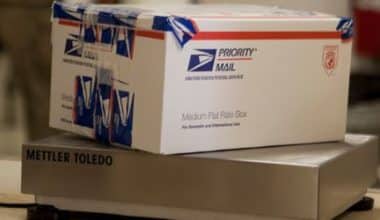According to Catalyst and Kantar’s report, The State of E-commerce 2021, improved logistics and delivery methods are predicted to increase by 28% over the next few years. It is becoming increasingly evident that providing customers with alternate shipping and delivery methods, such as a cash-on-delivery service, is critical to improving the customer experience.
Offering cash on delivery is still advantageous for your eCommerce business, with few drawbacks. But, exactly, what is cash-on-delivery? Let us explain!
What is Cash on Delivery (COD)?
Cash on delivery (COD), also known as “collect on delivery” and “cash on demand,” is a payment technique in which clients do not pay for sent items until they have received them and determined that they want to keep them. If the customer does not wish to keep the things and pay for them, he or she returns them to the shop.
With cash on delivery, the retailer assumes significant financial risk and frequently bears the expense of shipping because they don’t know whether or not the buyer will pay for the items. The sale is not complete until the items are delivered and the buyer decides to pay for them.
How Cash On Delivery Works
Cash on delivery can be offered by retailers for both perishable and nonperishable goods. A consumer often pays the delivery driver directly for the entire order under a COD arrangement for perishable goods, such as a phone order from a local pizza shop.
A customer will either pay the shipping fees and/or a deposit (but not the cost of the items) beforehand for nonperishable goods or pay all associated costs at the time of delivery. In the latter situation, the handler will send the monies to the supplier after deducting their shipping and handling fees.
How Do You Provide a Cash-On-Delivery Service?
The COD system is ideal for customers who are hesitant to provide their bank credentials online. This alleviates client anxieties at the checkout, and the online business gains customers who would have purchased offline otherwise.
The customer must select the COD option at the checkout page and payment screen for this to happen.
As a result, when the courier arrives with the delivery, the consumer must pay before receiving and opening it.
The money will be sent to the seller in accordance with the terms and conditions previously agreed upon by both parties.
What are the Terms and Conditions of COD Delivery?
All terms and conditions must be met to ensure quality service for the customer, courier, and seller. The activities that each agent must perform are listed below.
- Customer/Buyer: The payment is made by a customer or buyer in order to assure delivery and meet contract conditions. According to the contract, the buyer must provide accurate delivery information, be available at the time and location agreed upon by the customer and courier, and have cash on hand to make payment in the method specified by the courier, online store, or both of these parties and pay the total amount, including VAT and any additional costs, if applicable.
- Courier: This agent is critical to the delivery and payment of the seller. In essence, couriers are in charge of a significant portion of the cash-on-delivery service, serving the interests of both customers and sellers. Couriers must deliver parcels on time and at the agreed-upon location while also providing a high-quality service. Furthermore, they must ensure that payment is made before the parcel is delivered. The courier must also adhere to the seller’s terms and conditions.
- Seller: The seller should make the process simple and efficient for the customer by providing high-quality products or services on time. Sellers must also follow the terms and conditions agreed upon between the consumer and the courier.
Is It Safe to Pay Cash On Delivery?
This payment and shipping method is secure, but as with any transaction, there are dangers.
The buyer or customer benefits from not having to pay for a thing until it comes. This, however, does not guarantee that the things are not damaged or that there was an issue with the order. If any of these things happen, an exchange, return, or compensation will take care of the problem.
The vendor takes the risk of sending the product(s) but not getting payment. This is a significant risk because if the buyer fails to deliver his share of the contract, the seller will be liable for all delivery and return logistics and costs.
Nonetheless, cash-on-delivery transactions are secure as long as all parties agree to follow the terms and conditions of the transaction.
The legal criteria for cash-on-delivery services differ per courier and are outlined in the contract. Normally, the shipment cannot be opened until the item and additional delivery expenses are paid for.
Sellers take a risk by shipping an order without first collecting money. However, with returning customers, this risk is reduced. The transaction is secure since the buyer cannot receive the parcel until the payment is received.
There is a means for buyers to inspect the contents of the shipment before making a payment. The vendor must authorize the customer to do so and make this clear in the delivery terms and conditions.
How is COD Delivery Governed?
There are no restrictions governing cash-on-delivery shipping. In general, the rules for the service are established by both the online business and the courier. This includes accepted payment methods, the number of delivery tries, and the order’s maximum cost.
Furthermore, as with any other type of transaction, there is legislation that protects both customers and sellers. This includes national, European, and even international law.
Cash on Delivery vs. Cash Advance
Cash in advance, as the term implies, includes the buyer paying for items in advance of delivery. This is the most prevalent payment method for online marketplaces and foreign business exchanges because it reduces the seller’s risk of nonpayment. The buyer, on the other hand, runs the risk of paying for broken items or an inaccurate order.
The vendor accepts the risk that the buyer will not want their order and will return it without paying. When deciding on payment methods, keep your company’s ability to bear financial risk in mind, especially if you sell perishable goods that cannot be restocked.
Types of Cash On-Delivery Payment Methods
COD payment methods include the following:
- Payments using mobile devices
- Cash
- Check
- Online credit card payments
While “cash” is in the name, it is not the only payment method available to merchants for this service.
#1. Payments using mobile devices
When a postal worker or delivery person carries a mobile card reader, they can promptly process payments for delivered items. Mobile payments are useful for restaurant deliveries or on-demand services.
#2. Cash
Couriers and delivery drivers can accept cash payments as well. This payment mechanism, however, poses a security issue because it can make couriers targets for criminals.
#3. Check
Checks are a convenient and rapid alternative to cash. Mobile payments are useful for restaurant deliveries or on-demand services. When products must be paid for immediately upon delivery. However, this is not the most secure payment method because you won’t know if a check has bounced until after the goods have been delivered to the customer.
#4. Online credit card payments
Online card payments are the ideal solution for all parties involved if you want to offer customers several days to determine whether or not they want to keep things.
Cash On Delivery Examples
Popular shops are embracing COD as a method to make online shopping easier for customers and less financially hazardous. Let’s take a look at how these companies are implementing cash-on delivery.
#1. Prime Try Before You Buy
Customers can try on clothes, shoes, and accessories in a variety of sizes, colors, and styles before committing to purchase. While shoppers must have an Amazon Prime account and a credit card on file to use this service, they are not charged until they decide what they want to keep.
Customers can try on a variety of products before making a purchase. They have seven days after receiving the shipment to pick what they wish to keep. Customers log in to their Amazon accounts after making a decision, specify what they want, and Amazon charges their credit card.
Then they put the unwanted items in the prepaid return bag that came with the shipment and drop the bag off at a post office or an Amazon location to return the items.
#2. Stitch Fix
StitchFix also accepts payment on delivery. Customers fill out a form about their style and the types of things they want, and a stylist chooses goods that suit these requirements.
Unlike Amazon, Stitch Fix consumers have no idea what they will receive in their order. In addition, unlike Amazon, which distributes things for free, Stitch Fix charges a $20 styling fee for every shipment, which can be used as a deposit toward items the client decides to keep.
When customers have decided what to keep, they go to Stitch Fix’s website, make their selection, provide feedback on how their next shipment could be improved, and check out using the payment method on file.
Stitch Fix Customers pay for what they intend to keep and return what they do not intend to keep. They don’t get their $20 styling money back if they don’t keep anything.
#3. Food Distribution
One of the most common examples of cash on delivery is food delivery. Customers order delivery by phone, online, or through an app. They must pay the delivery driver if they do not prepay for the food online or over the phone.
Customers must pay in cash, via a mobile card reader, or in any other manner acceptable to the restaurant when the driver arrives. They don’t get the food if they can’t pay the driver.
Restaurants should avoid accepting cash for delivery. These businesses spend time, money, and ingredients preparing dishes without knowing if the recipient will be willing and able to pay.
Cash On Delivery Pros and Cons
COD payment collection has advantages and downsides, just like any other sort of payment method.
Pros of Cash On Delivery
- It has the potential to boost cash flow: COD allows vendors to collect payments immediately upon delivery rather than producing an invoice with net payment terms (Net 15, Net 30, etc.) that leave the buyer weeks or months to pay. As a result, payment delays shorten and cash flow improves.
- It has the potential to be more enticing to customers: Customers may choose to purchase additional things if they do not have to pay in advance. Customers who do not have credit cards or do not wish to share their credit/banking information online are likewise drawn to COD.
- It has the potential to boost your reputation: COD allows customers to pay after they receive their item, which can assist develop your brand’s image and alleviate customer concerns about product quality.
Cons of Cash on Delivery
- Delays in delivery will result in delayed payment: If your product is delayed in delivery, payment will be delayed as well.
- You risk the consumer declining the products upon delivery: Customers who order things with a particularly long lead time may eventually change their minds and return their orders.
- Failure to deliver and nonpayment may stem from carrier issues: Unless your company has its own internal delivery service, you’ll be relying on a third party for all deliveries. This reduces your control over the shipping and delivery operations and increases external risks, such as things lost in transit or cash not collected by the delivery driver.
Conclusion
Cash-on-delivery shipping is becoming increasingly popular in many areas, emphasizing the need of partnering with couriers that can offer this service both nationally and globally.
Even though this payment and shipping method may cause some delays in receiving revenue, it provides customers with a sense of security when placing online orders. Furthermore, COD provides a way for new online stores to attract new customers.
Contact us if you have any queries about how to use this delivery and payment option in your eCommerce store!
Related Articles
- Most Lucrative Business In The World 2023 (Updated!!)
- SHIPPING CARRIER: Top Carriers In US & How To Choose One
- LIST OF MOST PROFITABLE SMALL BUSINESSES: Top 35 (+ Detailed Guide)
- Best Business to Start in 2023: Most Profitable Picks (Detailed)
- DELIVERY OPTION: The Ultimate Guide in 2023 (updated!)






